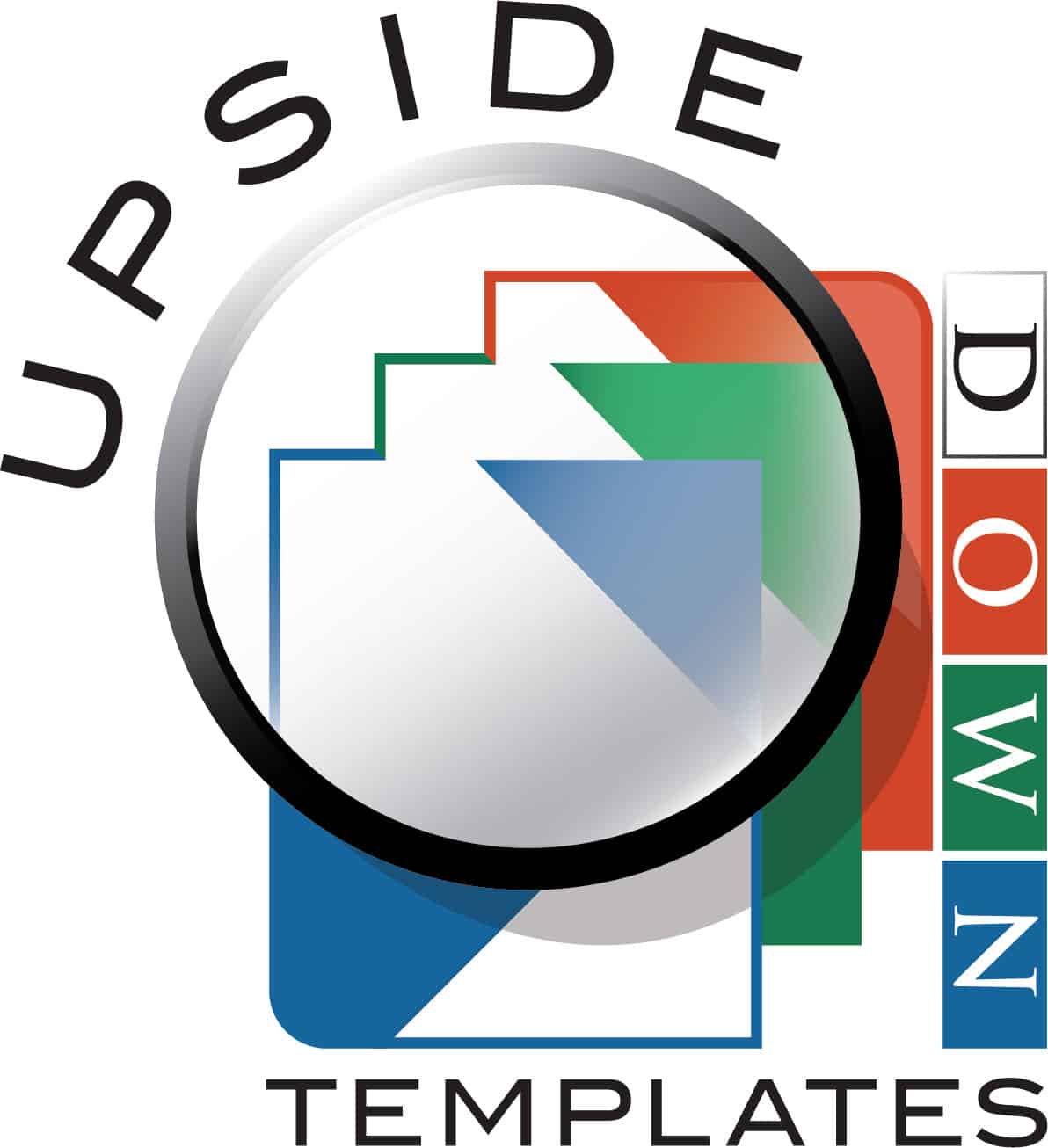10 ways that Microsoft templates can save you time and reduce frustration

1. What is a template?
A template is not a document. It is a master file (or shell) that contains common key elements that are applied whenever you create a brand new Word document, PowerPoint presentation or Excel workbook.
Typically many of the elements contained in the template are related to the corporate brand guidelines. The idea is that you run the template and it will create a unique and editable version based on the template that also maintains the integrity of the original design.
Of course Microsoft Word, PowerPoint and Excel all have different capabilities and limitations as to the type of information that can be saved, and also how it can be programmed and saved into a template.
Microsoft Word has .dotx as the template and .docx as the document that is created from the template. Microsoft Word has the most comprehensive range of features that can be applied to it’s templates. Key time saving functionality includes adding custom styles, colours, ribbons, Dialog boxes, outline numbers, tables and charts.
Microsoft PowerPoint has .potx as the template and .pptx as the presentation. Key features include multiple slide masters, colour theme, image placeholders and table styles.
Microsoft Excel has .xltx as the template and .xlsx as the workbook. Key features include colours, fonts, styles, charts and calculations.
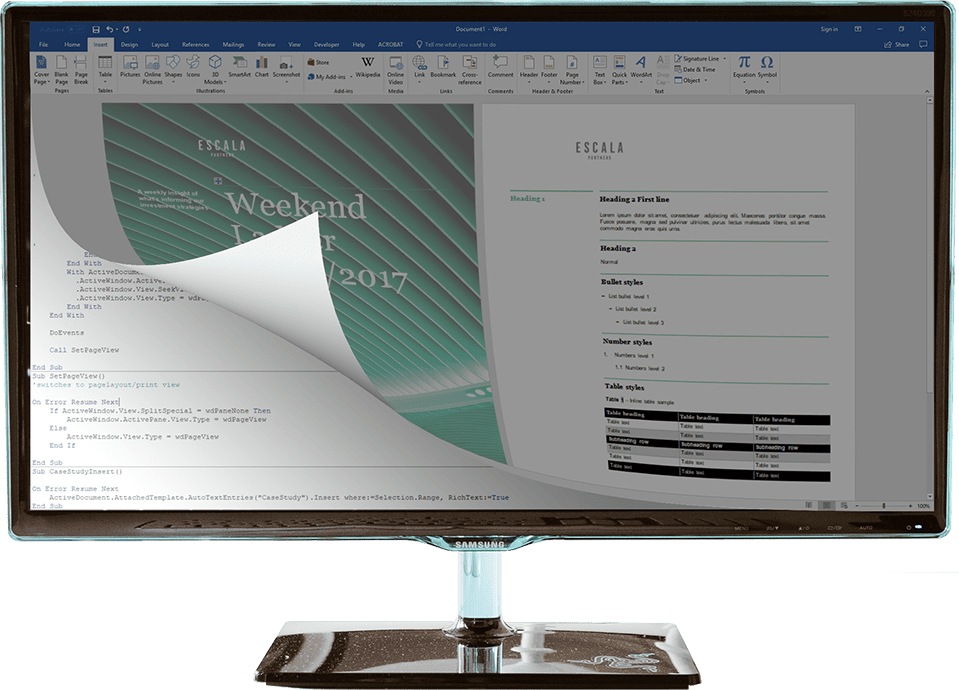
2. Styles
The ability to pre-set styles is one of the key features of templates yet are often undervalued and underused. Using styles to include font size, colour, spacing etc. instead of manual formatting will save you hours and ensure that you maintain consistency not only within the document but also across all documents of the same type. Once styles for headings, body text, bullets etc. have been applied it makes it vey easy to update the entire document quickly if there is a formatting change.

3. Colour palette
Embedding the corporate colour palette into the template guarantees that text, charts and tables remain on brand, maintaining the colour theme throughout the document automatically.
Having to manually set colour values every time you need to change a colour is not only time consuming but bound to go wrong at some point. It only takes a typo, a copy formatting from the wrong colour or those little sticky notes with the RGB colours to go missing from the edge of your monitor!
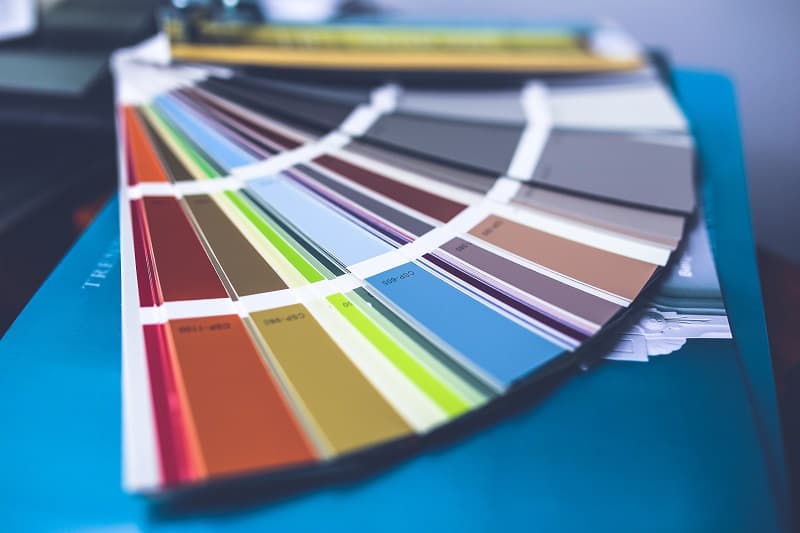
4. Section breaks
Section breaks can wreak havoc with your documents and cause more problems in Microsoft Word than anything else. There’s really only 3 times when a section break needs to be used at all;
(1) to change between portrait and landscape pages,
(2) to swap between different columns layouts, or,
(3) if you need different headers and footers within the same document.
In most other circumstances a page break should be used instead.
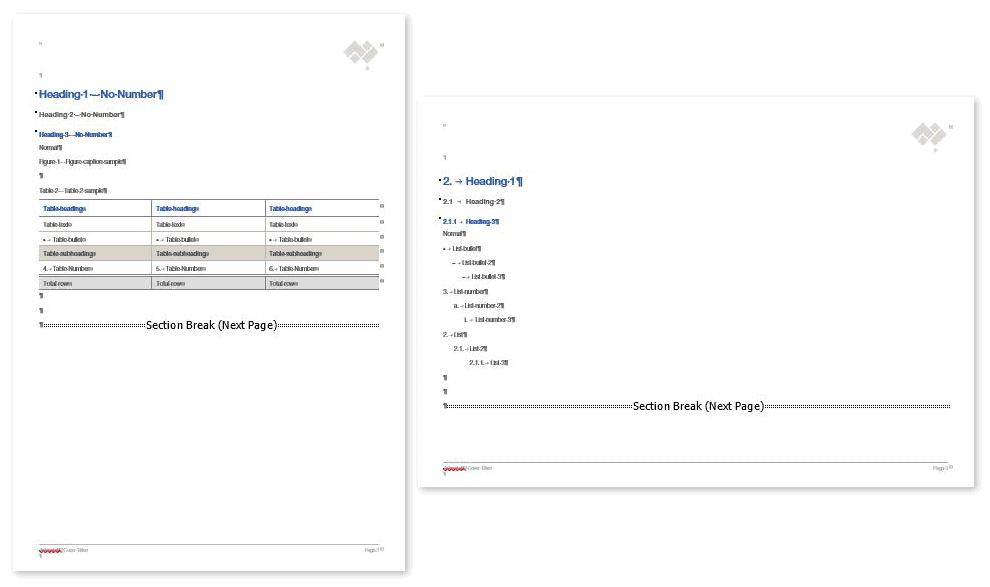
5. Ribbon/Tool bar
A custom company ribbon can save time because all common formatting tools that these needs can be accessed from the same place.
A basic toolbar can be created on templates that are not macro enabled. This will allow you to have easy access to Headings 1, 2 and 3. Normal style and List bullet 1.
A more complex toolbar can be created through macros. This includes, but is not limited to:
● Insert Logo
● Remove Logo
● Insert A4 Landscape page (in-between pages or at the end of document)
● Insert A4 Portrait page (in-between pages or at the end of document)
● Insert “Company” Table (more than 1 table can be added)
● View of most of the styles used (Headings, Subheadings, List Bullets, List Numbers, Table
styles, etc)
● Table caption, Picture caption
● Update TOC
● Update Table of Appendices
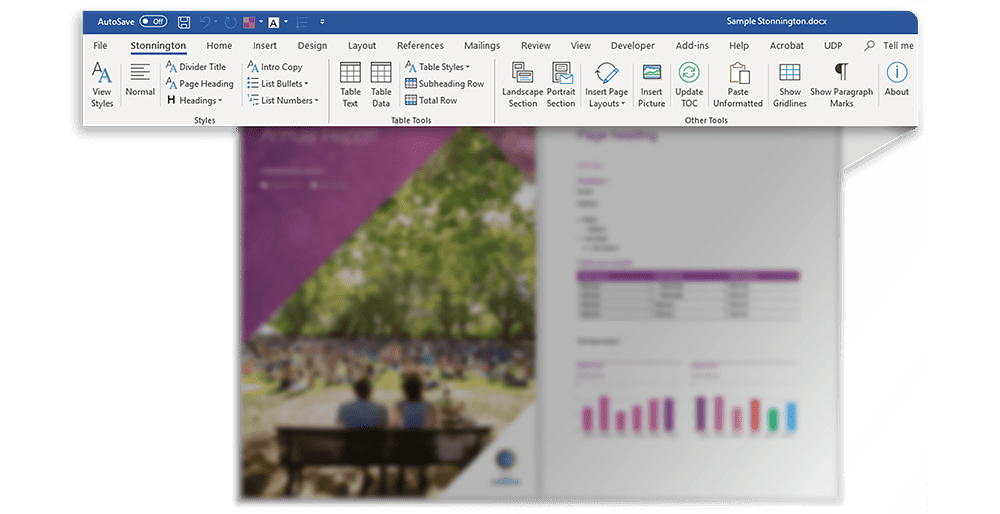
6. Dialog boxes
We can create custom dialog boxes through coding of the template. This helps so that the user only needs to fill in standard information into the fields once and it will populate it throughout the document in the correct order, position and style.
Complex dialog boxes can also include, but are not limited to:
● Choice of Covers (Different images, different position of headings)
● Choice of 1 column or 2 column
● Choice of Odd & Even Pages
● Choice of enabling/disabling a section of fields if they choose a specific item in the previous
field.
● Choice to pick specific items and only those items will appear on the document.
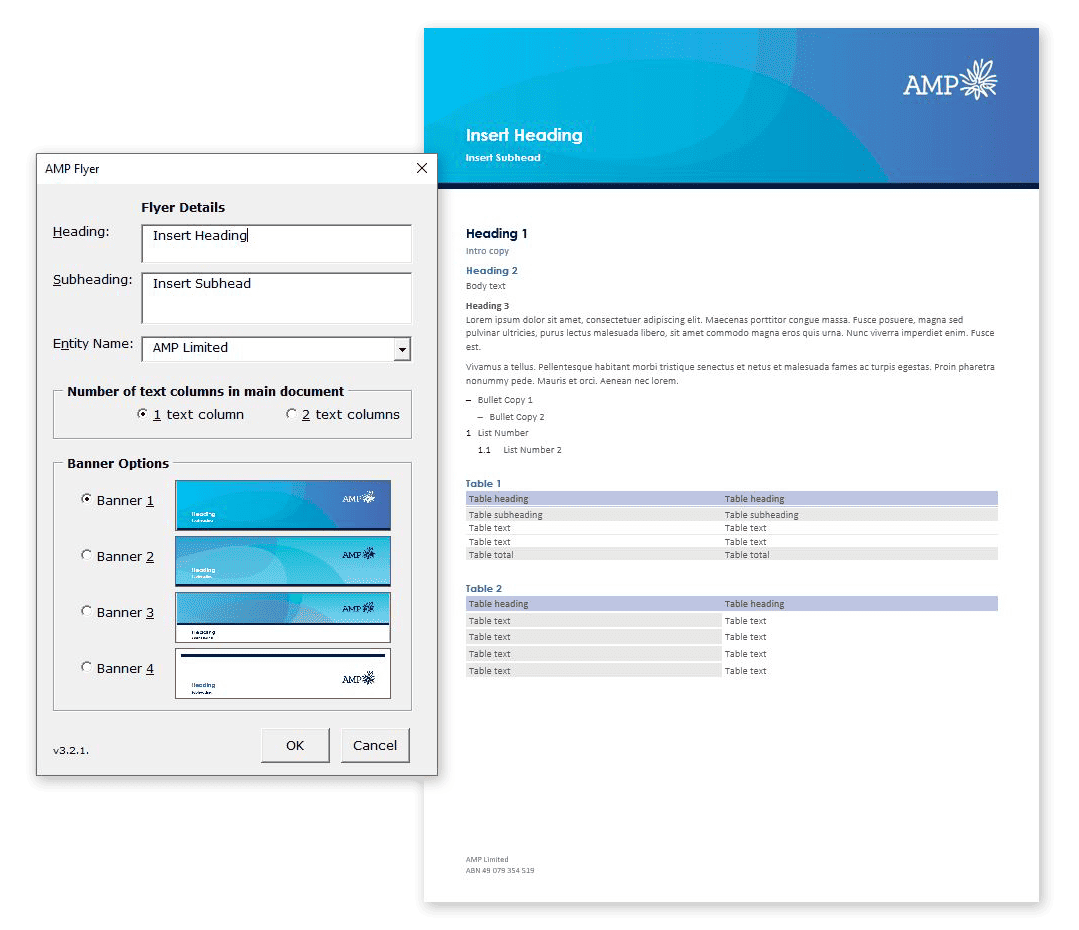
7. PPT Slide Masters
PowerPoint templates let you create multiple slide masters based on your design (case studies, multiple covers, multiple dividers).
Colour theme can also be pre-set to match your comany’s colours. This will make sure that all graphs come in the right order and right colours.
PowerPoint also lets you create and apply custom shaped image placeholders in the template.
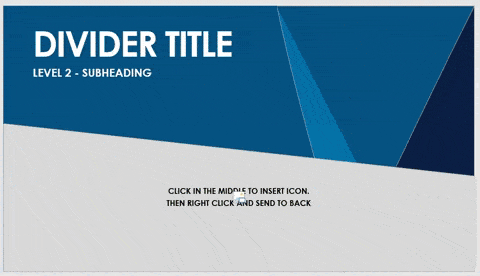
8. Tables/Charts
Custom Table styles can be created in PowerPoint via coding. This does not make the PowerPoint a macro-enabled template. Table styles allow you to create your own design that is not like any of the pre-set PowerPoint tables. Table styles can have:
● Complete different colour that is not part of your 6 accent colours
● Dash, Dots, Solid borders
● Specific borders could only apply when turning on Odd/Even banded rows
● Fonts sizes can be customised to fit the rest of your PowerPoint
● Levels can be pre-set. Level 2 could be a bullet and so on
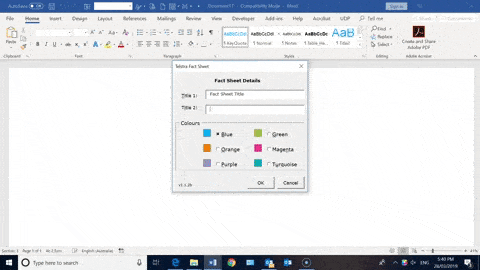
9. Outline numbers
The default order for outline numbering in Word often caused much frustration. Fortunately this can be set up to be controlled more via a template.
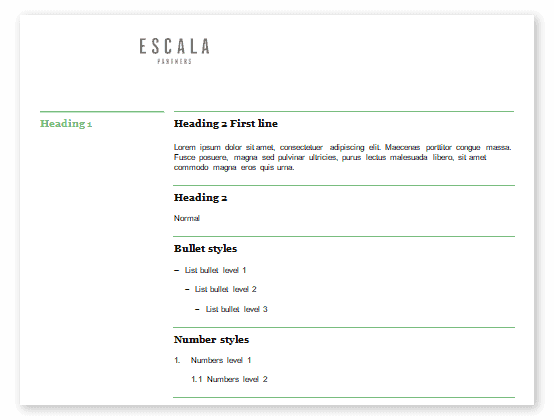
10. Formulas and calculations
Excel templates let you set up your default Excel workbook to automatically be on-brand with your colours and font styles, etc. You can also apply custom branded chart templates from an Excel template. This means that you can create professional looking reports from the raw data directly within Excel or by linking Excel and Word data.
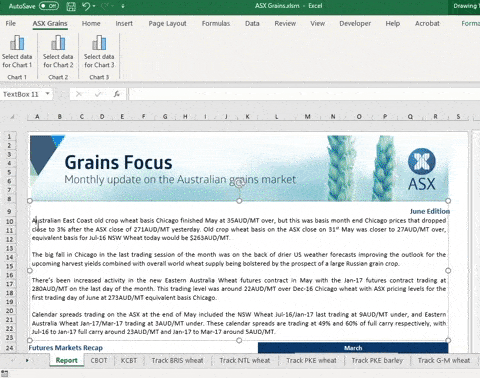

UpsideDown can help you set up a suite of Microsoft office templates to suit your brand design guidelines. We can also help you to rationalise the number of templates needed as well as automate many functions to make them quicker and easier to use. Call Clare at UpsideDown on +612 94114548 or email via the contact form below.



